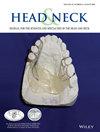Comparison of unilateral versus bilateral central neck dissection for clinically invasive papillary thyroid carcinoma
Abstract
Background
The American Thyroid Association guidelines primarily recommend central neck dissection for papillary thyroid carcinoma with advanced primary tumors or clinically positive neck nodes. However, the appropriate extent of dissection remains unclear. We aimed to compare the rate of locoregional recurrence between unilateral and bilateral central neck dissection in invasive papillary thyroid carcinoma.
Methods
Among 330 consecutive patients who underwent total thyroidectomy with central neck dissection for advanced papillary thyroid carcinoma, 212 underwent unilateral central neck dissection (UCND group) while 118 underwent bilateral central neck dissection (BCND group). We performed 1:1 propensity score matching, resulting in 99 matched pairs. Surgical outcomes and safety were compared between the two groups. Additionally, the impact of surgery on locoregional recurrence was compared using survival analysis.
Results
During a follow-up of 47.8 ± 20.4 months, 29 (8.8%) patients experienced locoregional recurrence within the entire study cohort. Following propensity score matching, no significant difference in recurrence-free survival was observed between the two groups (log-rank p = 0.516). Multivariate analysis revealed that only T4 staging was an independent risk factor for locoregional recurrence (p = 0.006). The mean number of total and metastatic central lymph nodes retrieved were significantly greater in BCND group (14.1 vs. 9.3, p < 0.001 and 6.8 vs. 4.6, p = 0.005, respectively). There was no significant difference in postoperative stimulated thyroglobulin levels between the two groups (0.79 ng/mL vs. 1.44 ng/mL, p = 0.389).
Conclusion
The present study demonstrates no prognostic benefit in conducting bilateral central neck dissection. Unilateral central neck dissection may be the preferred choice for clinically invasive papillary thyroid carcinoma.

 求助内容:
求助内容: 应助结果提醒方式:
应助结果提醒方式:


